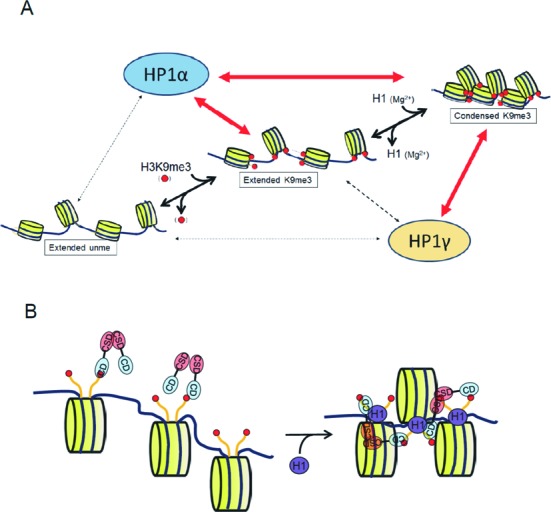Figure 5.

Model for the recognition of H3K9me3 in multi-nucleosomes in different aggregation states. (A) Condensation-dependent recognition of H3K9me3 by HP1γ. In contrast to HP1α, HP1γ cannot effectively bind to H3K9me3 in extended nucleosomes, but does bind to H3K9me3 in condensed nucleosomes. The property, however, could not explain the reported localization of HP1γ that preferentially localize to euchromatin and only weakly to the DAPI-dense pericentromeric heterochromatin. The mechanism(s) other than condensation-dependent HP1γ binding could also support the specific localization in vivo. (B) HP1γ binding to condensed nucleosomes. The distance between the two CD (blue) in dimer HP1γ, which is formed by the interaction between the CSD (red), may not be long enough to reach the two H3K9me3 (red circles) in a core nucleosome. However, the distance between the H3K9me3 residues in two adjacent core nucleosomes is short enough to be reached by the two CD in dimerized HP1γ.
